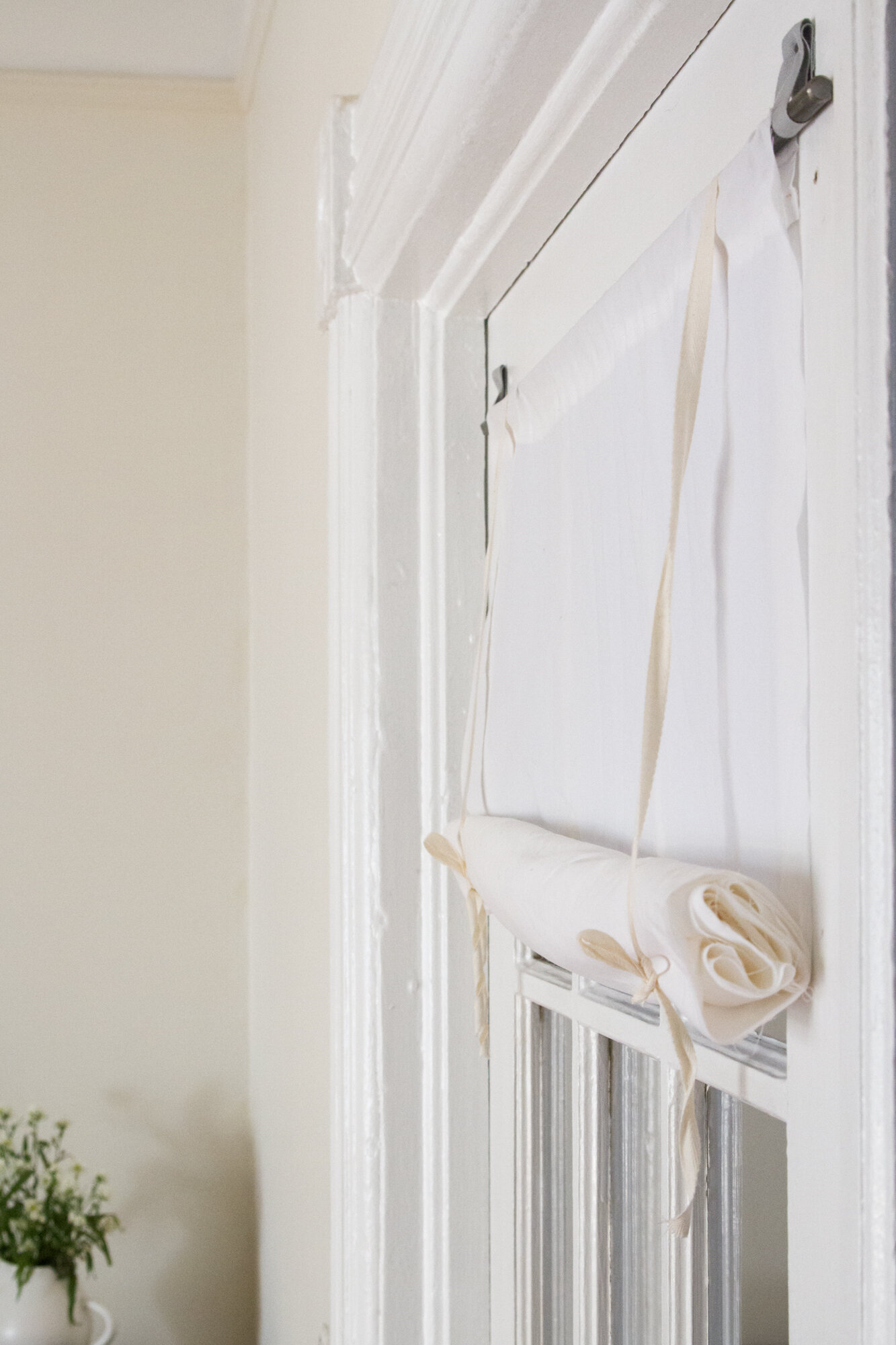
The thing about glass doors is that you’re able to see through them. I mentioned yesterday that there are moments when the transparency is very lovely, but there are also moments that call for a bit of privacy or a bit of light blocking or general cocooning. We needed curtains.
We are not the first people in the world to seek this kind of solution for glass doors and judging from the amount of mismatched hardware I pried from the doors when we moved in, we were certainly not the first tenants to do so in this apartment.
If you’ve ever gone down a rabbit hole of curtain hardware made for French doors, you’ll know that the pickings are slim both literally and figuratively. On the most affordable end of the spectrum, there are classic hardware store swivel-end sash rods which are slender and easy to come by and very inexpensive to purchase, but they’re not very sturdy and not very lovely to look at. On the more costly end of the spectrum, there are outside-mount cafe curtain rods which look considerably nicer and appear to be far more sturdy, but which also clock in at roughly ten times the cost of their hardware store counterparts. Given these two options, I decided to jury rig my own.

I began with a walk to my neighborhood Italian ironworks shop, where under the watchful eye of the St. Joseph statue perched on the roof, I had a gentleman in the shop cut four lengths of 3/8-inch iron rods. He charged me $10 per piece, which is exactly double what I paid the last time I made my own curtain rod, but years have passed since then and at a quarter of the price of the outside-mount café rod I’d been eyeing, I was happy to pay it.
Instead of the copper pipe fittings that I used in the kids’ old room, I decided to mount my curtain rods with loops of tightly woven cotton ribbon hammered into place with iron upholstery tacks. To me, they’re perfect.
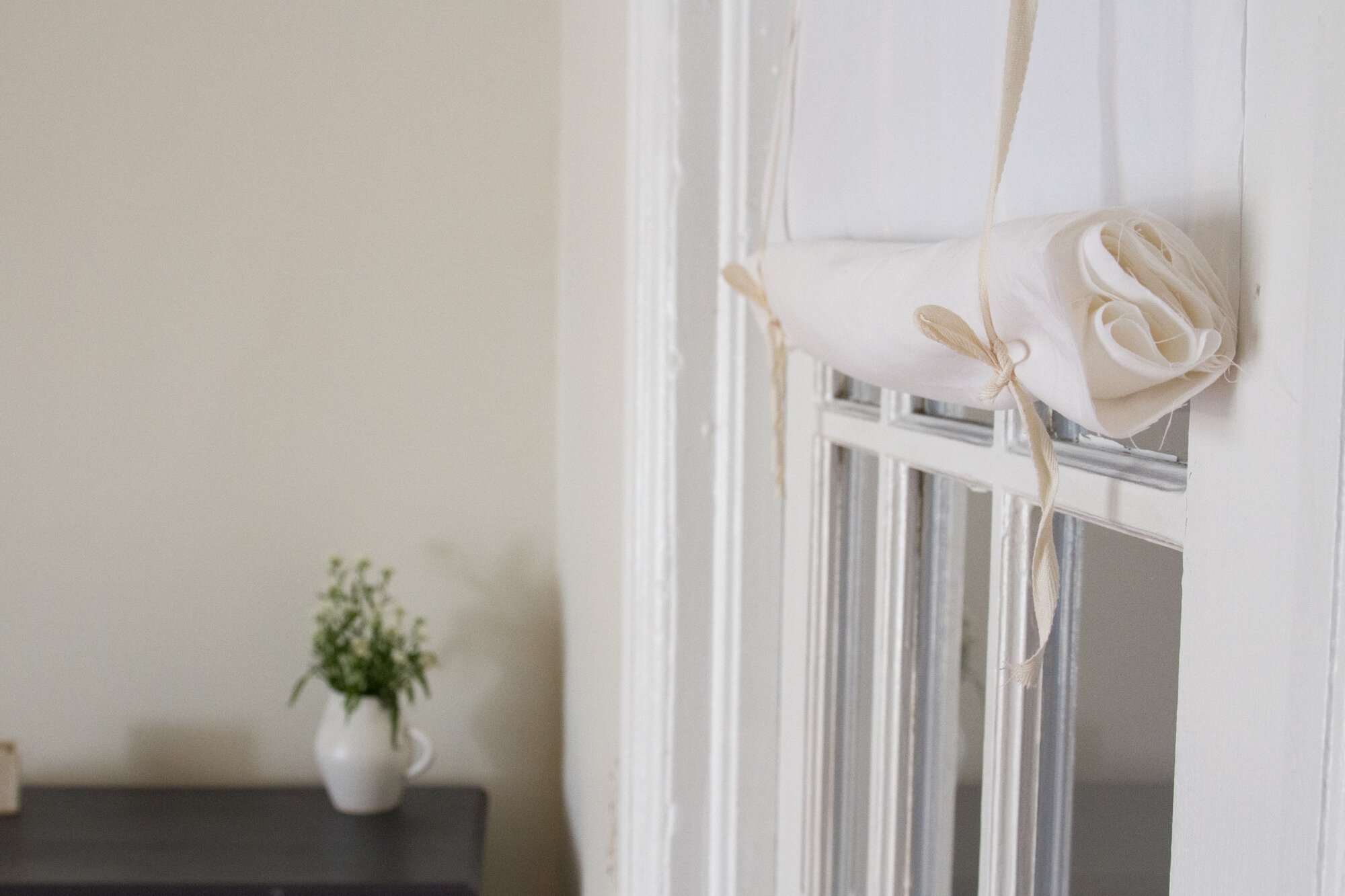
The curtains themselves could not be less fancy, which is only a slightly more generous way of saying that they’re quite crude. I wanted simple and straight shades without ruffles or pleats and I wanted them to be quick to make and practically free. I hacked up a bed sheet. I stripped an old twin top sheet into four equal lengths, which left me with a hemmed bottom and top on each curtain, but only two hemmed edges out of eight. I have not done anything at all about these raw edges.

On the top of each length of fabric, I sewed a very simple pocket by hand and all four curtains took about 30 minutes to make start to finish. These are not perfect curtains but making them so could be done without too much more of an investment. On a day when I’m feeling more flush and more patient I might spring for a finer fabric and go through the trouble of hemming. Until then, they’re good enough for me.
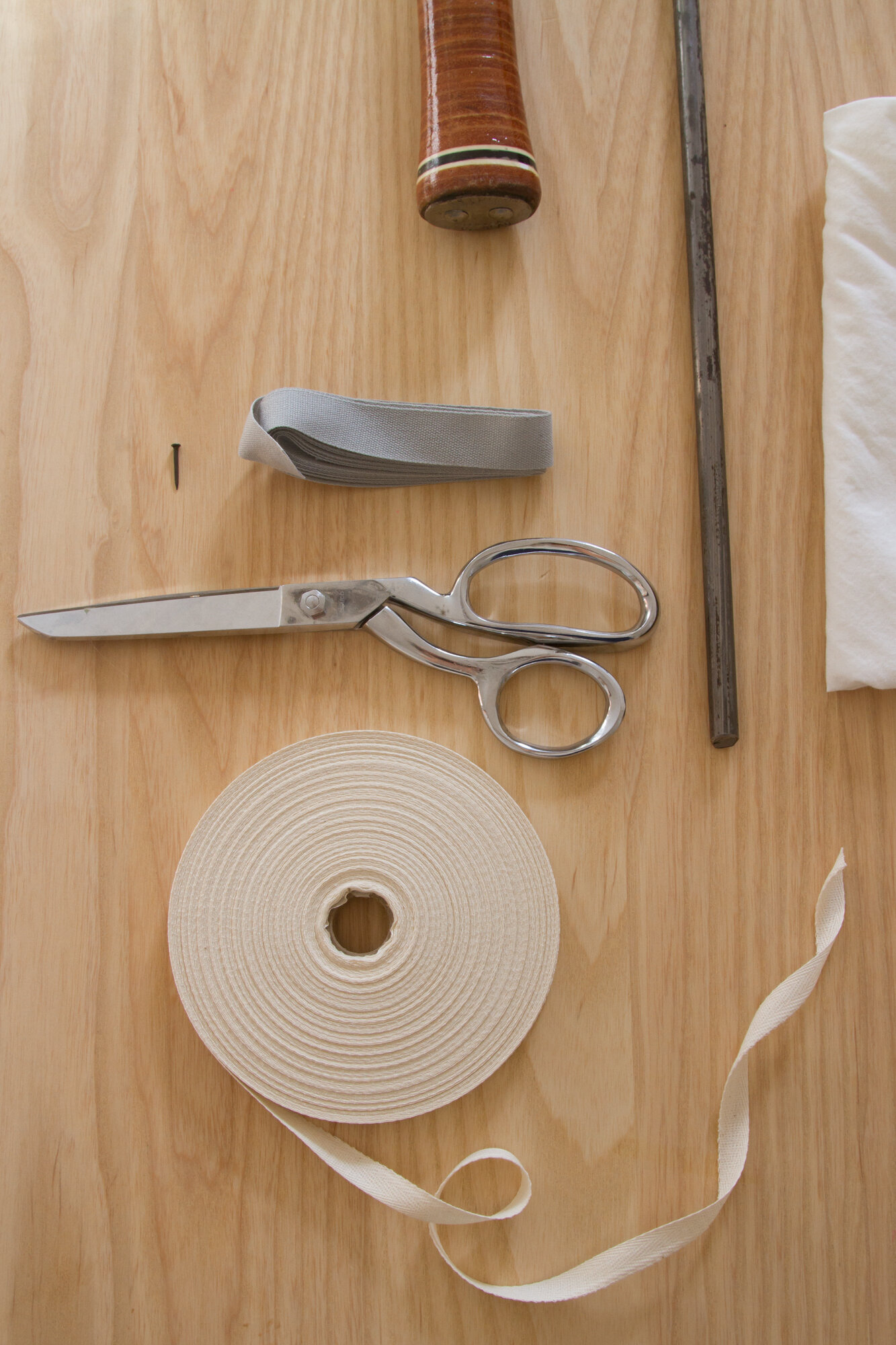
A few more notes:
+ If you’ll never be the DIY type, there are lots of lovely folks who make more polished versions of the curtains; like these beautiful linen shades.
+ Not everyone has a friendly neighborhood ironworks shop, but poke around where you are and I’ll hazard the guess you might just strike…iron? (If not, with a lightweight fabric and a small enough span, a wooden dowel would likely work here, too.)
+ When you buy unfinished iron of this sort from an ironworks shop, the cuts will likely be rough and the iron untreated. I gave mine a once over with a bit of steel wool and some olive oil. In this and all things, proceed at your own risk.
+ This mounting style is very flush to the door and is really best for cafe-style curtains or shades where the curtain is not pushed from side to side, but is left drawn or rolled and tied to let in the light.
+ I like to roll my curtains and tie them with the cotton twill tape I keep draped around the rod. To save time, I start my roll with one big fold that reaches the bottom edge of the curtain up toward its middle. This way I’m not needing to spend five minutes rolling each one top to bottom. (Sometimes I am even more lazy and tie the curtains into a big old knot and get on with things.)
+ I’ve decided to keep things light for now, but you could easily swap a dense, dark fabric—like the inky linen I used in our kids’ old room—and end up with something that blocks the light more completely.
+ If you’re not someone who craves direct sunlight, you might decide to go in the genius direction of Daniel Kanter and make your own privacy glass by covering individual panes with fabric and a cornstarch wash (see also). (Shout out to a dear reader who directed me to this gem of a project.)
This post includes affiliate links for some of the products mentioned. Reading My Tea Leaves might earn a small commission on the goods purchased through those links.

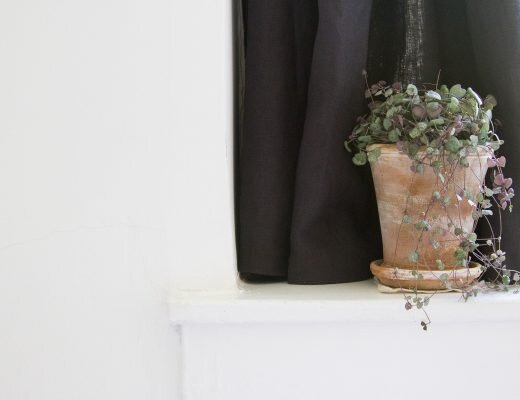
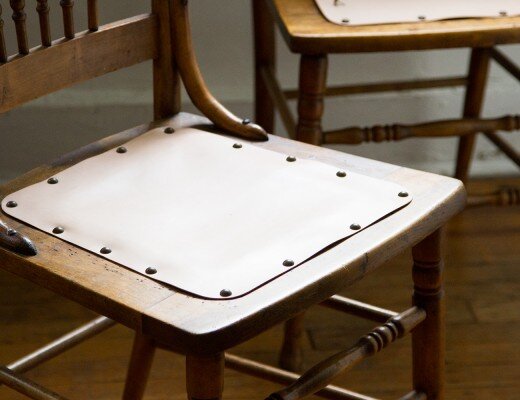
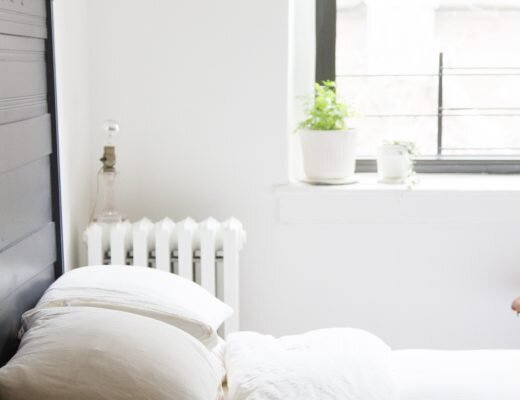
7 Comments
I also make all of my curtains with bedsheets! I always find 100% cotton sheets for around $2 at Goodwill. Beiges and whites abound there. I’ve even dyed some white ones with tea. And I use wooden dowels to hang them, as you suggested. Way cheaper than conventional curtain riggings. I’ve also wanted to try scraping the bark off of sticks and hanging them for an even more natural look. In that case they wouldn’t slide, but I tie mine in your “lazy” knots most of the time anyway .
I have used tree branches and they work really well, though it can take some patience to find one that is the right size, shape, etc. I ended up painting the branch the same color as the wall to get a monochrome, but textured look and it was really lovely!
I had a laughing face after that last sentence; I always forget emojis don’t show up in your comments! Now it unintentionally looks snarky. Sorry about that!
Love the solution for hanging the rod. I always struggle with this and it looks like this method would be a significant improvement to the hardware I am currently using for my kitchen window. Thanks for the creative idea.
I love that Saint Joe.
Brass barrel Rod holders and solid brass rods are better solutions that are actually made foot curtains and have been used for the past 70 years. Just google them.
I love this solution and wouldn’t trade them, but options abound!
Comments are moderated.